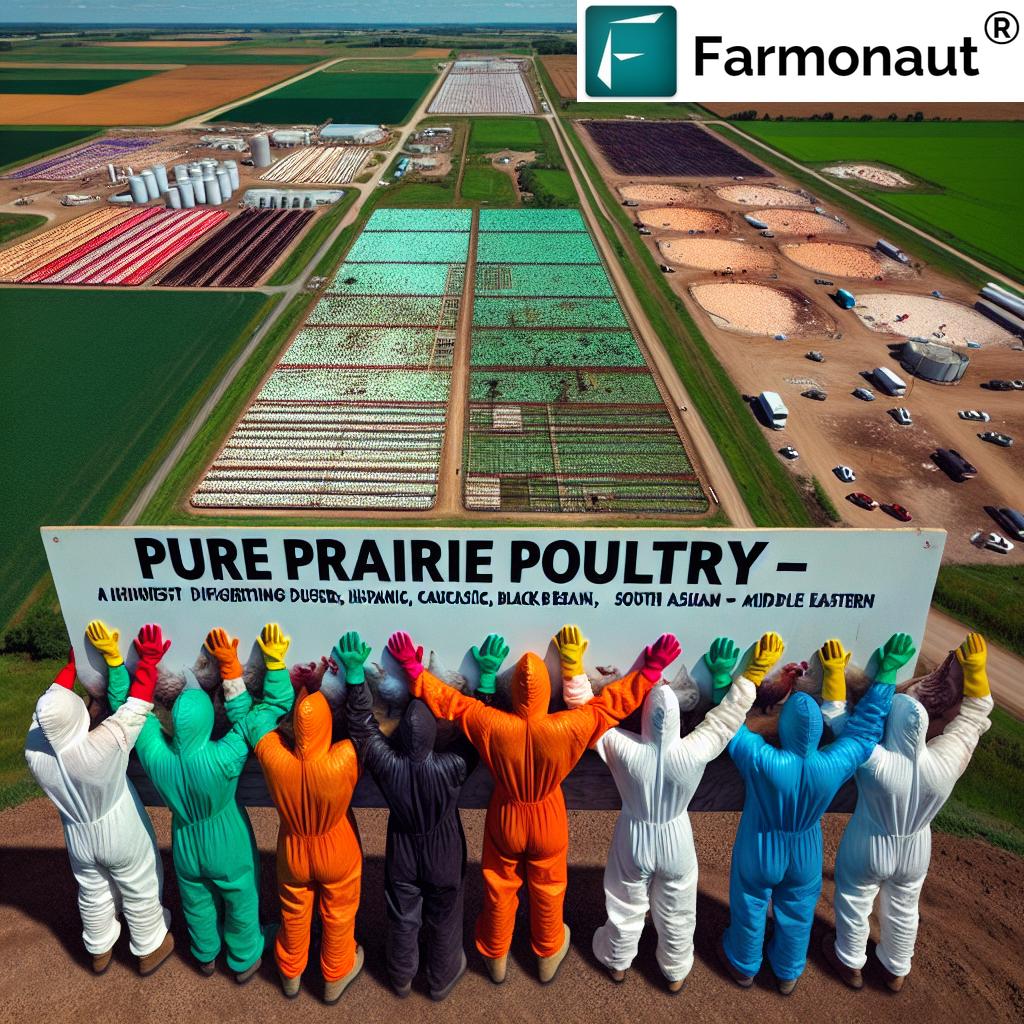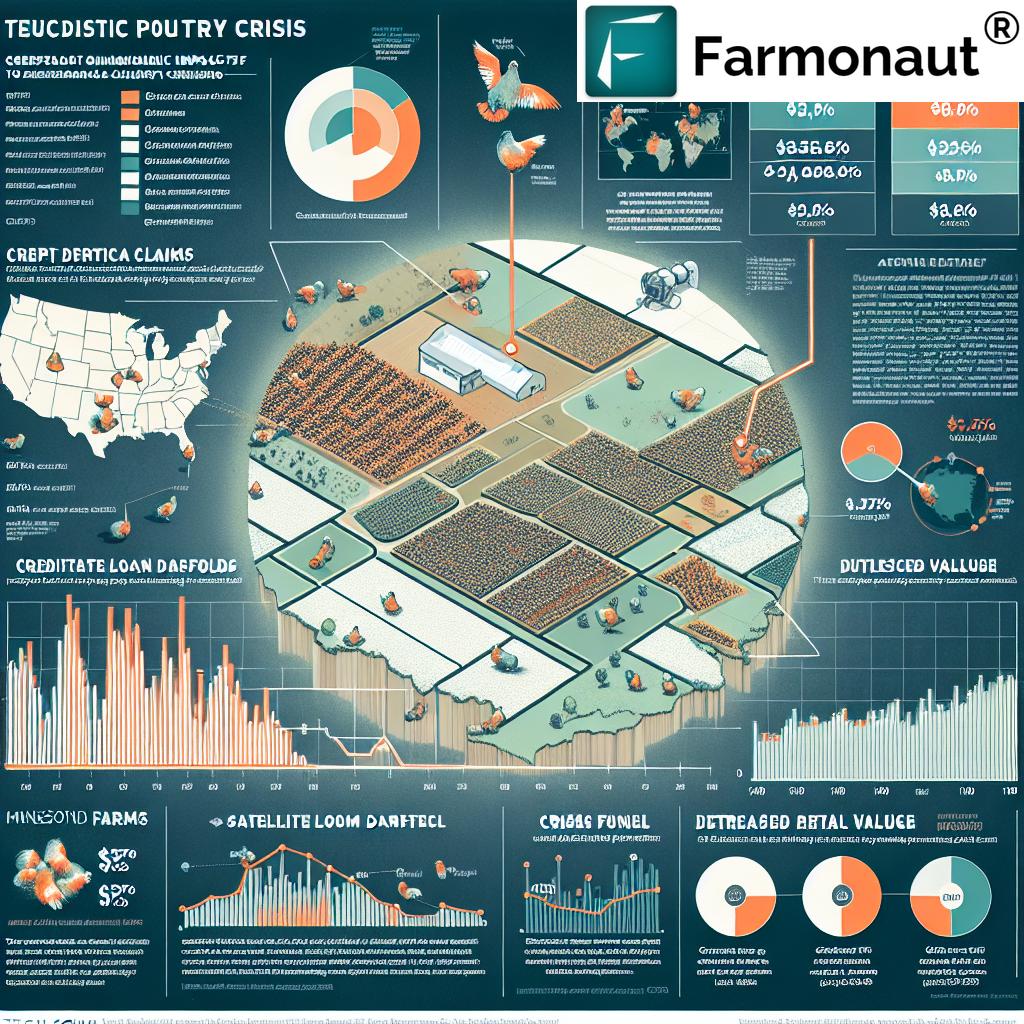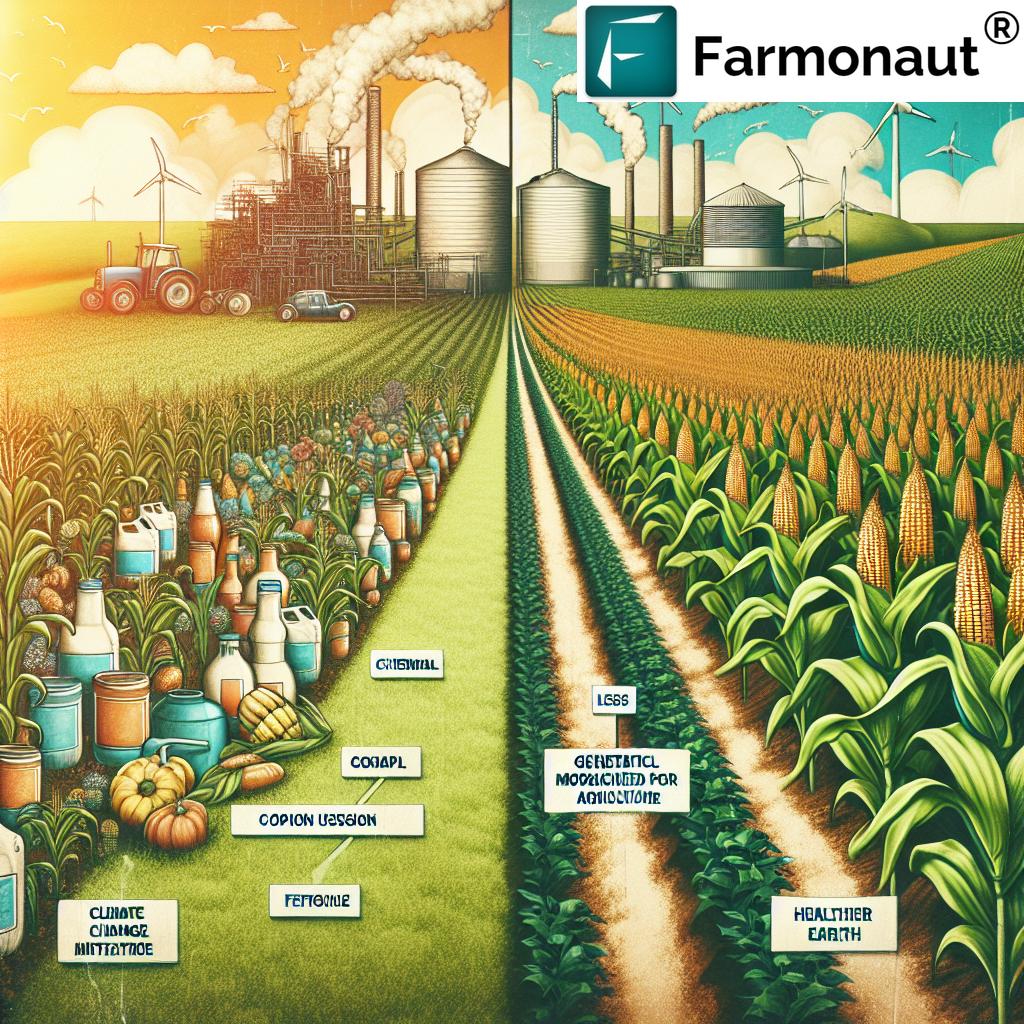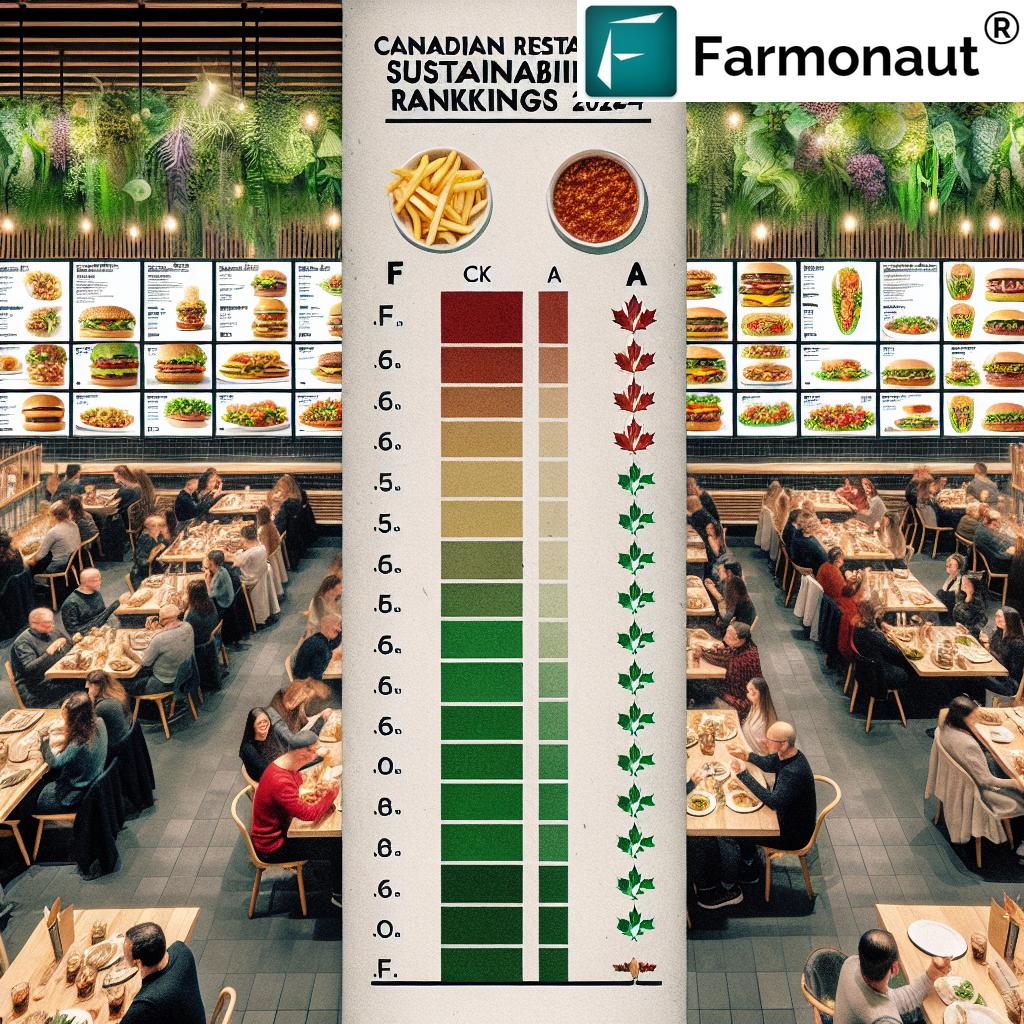Shocking Crisis: Iowa’s 1.3 Million Healthy Chickens Culled as Poultry Giant Collapses
In a devastating turn of events, Iowa’s poultry industry has been rocked by an unprecedented Iowa chicken cull crisis that has sent shockwaves through the agricultural community. The recent bankruptcy of Pure Prairie Poultry has led to the culling of approximately 1.3 million healthy broiler chickens, highlighting the severe poultry industry financial challenges and sparking concerns about food supply chain disruptions.

The Collapse of Pure Prairie Poultry
The Pure Prairie Poultry bankruptcy impact has been far-reaching, affecting not only the company itself but also dozens of farmers across Iowa, Minnesota, and Wisconsin. The Minnesota-based company, which had received substantial financial support from the USDA, including a $38.7 million guaranteed loan and a $6.9 million grant, was forced to shut down its operations at the end of September when its federal bankruptcy case was dismissed by a federal judge.
This closure has resulted in a significant Iowa agriculture economic shock, leaving farmers and creditors scrambling to manage the fallout. The situation has been particularly dire in Iowa, where the majority of affected farms and chickens were located.
The Iowa Broiler Chicken Cull: A Desperate Measure
As news of the poultry processing plant closure spread, the Iowa Department of Agriculture and Land Stewardship (IDALS) took swift action to address the crisis. On October 2, IDALS secured an emergency court order to feed and care for the birds on 13 Iowa farms, with a hearing scheduled for October 8 to approve a final plan for the chickens’ fate.
Initially, there was hope that the situation could be salvaged. IDALS had secured an offer to purchase all 1.3 million chickens and have them processed as they reached market weight, pending court approval. However, this glimmer of hope was quickly extinguished when attorneys for Pure Prairie Poultry’s creditors intervened.
On October 7, just one day before the scheduled hearing, creditors notified IDALS that they would assert their lien rights and security interests in the chickens, including against the buyer’s proceeds from the sale of the post-processed meat. Faced with the prospect of costly litigation due to these lien claims, the potential buyer withdrew their offer.
This sudden turn of events left IDALS with no choice but to proceed with the broiler chicken depopulation, a heartbreaking decision that resulted in the loss of approximately 1.3 million healthy birds.

The Economic Impact of the Cull
The poultry farm economic impact of this crisis cannot be overstated. Based on average prices for five-pound whole chickens in Iowa grocery stores, the retail value of the culled chickens is estimated to be between $9.5 million and $12.2 million. This staggering loss represents not only a significant economic blow to the affected farmers but also a tragic waste of food resources.
The ripple effects of this crisis extend far beyond the immediate financial losses. The food supply chain disruption in Iowa has raised concerns about potential shortages and price increases for poultry products in the region. Moreover, the incident has highlighted the vulnerability of the poultry industry to financial instability and the need for more robust safeguards to protect farmers and consumers alike.
Livestock Industry Financial Challenges
The Pure Prairie Poultry bankruptcy and subsequent chicken cull serve as a stark reminder of the livestock industry financial challenges facing farmers across the country. These challenges include:
- Volatile market prices
- Rising feed and operational costs
- Increasing competition from large-scale industrial operations
- Regulatory pressures and compliance costs
- Weather-related risks and natural disasters
The situation in Iowa has brought these challenges into sharp focus, prompting calls for increased support and protection for small and medium-sized poultry operations.
USDA Agricultural Loan Default: A Wider Concern
The collapse of Pure Prairie Poultry has also raised questions about the USDA agricultural loan default process and the oversight of federally-backed agricultural loans. The company’s inability to repay its substantial USDA-guaranteed loan highlights the need for more stringent vetting processes and ongoing monitoring of loan recipients to prevent similar situations in the future.
Agricultural experts and policymakers are now calling for a review of the USDA’s loan guarantee program to ensure that it effectively supports sustainable farming operations while minimizing the risk of defaults that could lead to crises like the one unfolding in Iowa.
Poultry Farm Crisis Management: Lessons Learned
The Iowa chicken cull crisis has underscored the importance of effective poultry farm crisis management strategies. Key takeaways from this situation include:
- The need for diversification of poultry processing facilities to reduce reliance on a single operator
- The importance of robust contingency plans for farmers in the event of processor bankruptcies
- The critical role of timely communication and coordination between farmers, processors, and regulatory agencies
- The potential benefits of cooperative ownership models in the poultry industry
As the industry reflects on this crisis, there is hope that these lessons will inform future policies and practices to prevent similar incidents from occurring.
Looking Ahead: Rebuilding and Resilience
While the immediate focus remains on managing the fallout from the Pure Prairie Poultry bankruptcy and the subsequent chicken cull, attention is already turning to the long-term recovery and strengthening of Iowa’s poultry industry. Efforts are underway to:
- Provide financial assistance and support to affected farmers
- Explore alternative processing options for the region’s poultry producers
- Develop more robust early warning systems for potential industry disruptions
- Enhance collaboration between industry stakeholders, government agencies, and financial institutions
These initiatives aim to build a more resilient and sustainable poultry industry that can better withstand future challenges and protect the livelihoods of Iowa’s farmers.
As the agricultural community grapples with the aftermath of this crisis, innovative solutions and technologies are becoming increasingly important. Farmers and industry professionals are turning to advanced tools to monitor and manage their operations more effectively. One such tool is the Farmonaut app, which provides valuable insights for agricultural management.
For those interested in leveraging satellite and weather data for agricultural purposes, the Farmonaut API offers a powerful resource. Developers can find comprehensive documentation in the API Developer Docs.
To access these tools and stay informed about the latest developments in agricultural technology, consider downloading the Farmonaut app:
In conclusion, the Iowa chicken cull crisis serves as a sobering reminder of the fragility of our food supply chains and the complex challenges facing the poultry industry. As stakeholders work together to address the immediate impacts and implement long-term solutions, the resilience and adaptability of Iowa’s agricultural community will be put to the test. By learning from this crisis and embracing innovative approaches to farm management and industry oversight, there is hope that a stronger, more sustainable poultry sector will emerge from this challenging period.
















